With Kameleoon AI Predictive Targeting, your visitors enjoy experiences customized to their purchase intention

In a shop, a good sales adviser will listen to, observe and understand the intentions of their customers to adapt their messages and offers to what they have perceived about each person. With Kameleoon AI Predictive Targeting, you can now replicate this individualized support online at scale, to boost your conversion rate and, ultimately, your turnover. This new solution is unique in the A/B testing and personalization market. It exploits the full value of visitors’ data (for both identified and anonymous visitors) to measure their purchase intention in real time and individualize their experience.
Welcome to the era of AI-driven personalization
Kameleoon AI Predictive Targeting is a unique tool enabling marketers to measure visitors’ purchase intention and to individualize messages, content and offers in real time. Co-designed by our R&D team and our customers, Kameleoon AI Predictive Targeting is the culmination of 24 months of work aimed at turning personalization into a real lever for increasing our customers’ turnover and margins. Kameleoon AI Predictive Targeting frees marketers from the constraints of lengthy data projects. The feature is installed through a single script and can increase turnover and margins in under 2 weeks.
What is it used for?
With Kameleoon AI Predictive Targeting and the real-time measurement of visitors’ purchase intention, brands can finally shift from segmented marketing to predictive marketing in order to individualize their actions for each visitor. This makes many new personalization options possible, such as:
- Identifying the optimal target for a marketing action;
- Optimally personalizing the homepage during a return visit or reorganizing the visuals, navigation menu or slider;
- Triggering — at the right time or on a given page — the action with the greatest chance of guaranteeing the conversion (e.g. urgency messages or social proof);
- Improving online advertising performance by retargeting only the population that has been identified as being tempted by an offer.
And what are its advantages?
Automation
By using Kameleoon AI Predictive Targeting to handle data complexity and volumetry to identify the optimal target for their actions, marketers will save precious time they can then spend on what really matters: their strategy.
Real-time activation
Kameleoon AI Predictive Targeting can be added to the Kameleoon platform’s existing native activation features. Any personalization actions (pop-in, page modification, etc.), become very easy and are automatically triggered according to how the visitor’s purchase intention evolves in real time.
Maximized ROI
The predictive approach obtains results that are systematically superior to the human approach. Kameleoon AI Predictive Targeting offers our customers a guaranteed ROI.
Kameleoon AI Predictive Targeting in action: Toyota doubles sales and margins
Toyota uses Kameleoon AI Predictive Targeting to manage the purchasing maturity cycle of all visitors and to identify those who are the most likely to buy a vehicle: the aim being to have them visit a car dealership. Each visitor enjoys an experience that is individualized according to their “probability to convert” metric, which is a direct reflection of their purchasing intention. The values used for segmentation are simple - from very low to very high, and use the underlying calculated metric value ranges to determine whether the likelihood to convert is considered very low, low, moderate, high, or very high. If the metric is estimated as ‘very low’, the visitor is considered to be cold. No specific action is proposed.
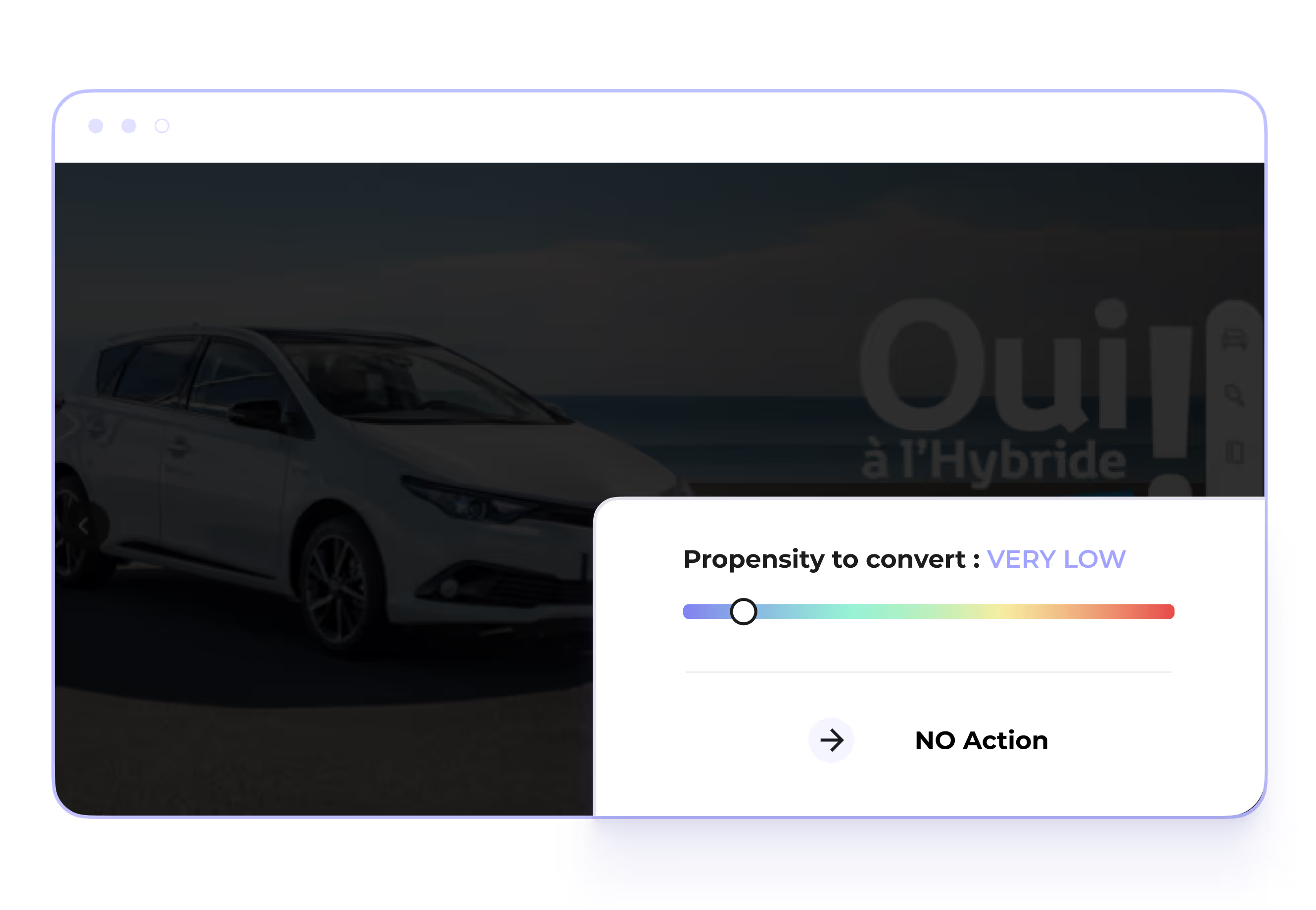
If the visitor’s probability to convert metric is ‘low’, the visitor is considered to be starting to feel tempted. They will be invited to request a brochure so that their personal details can be collected.
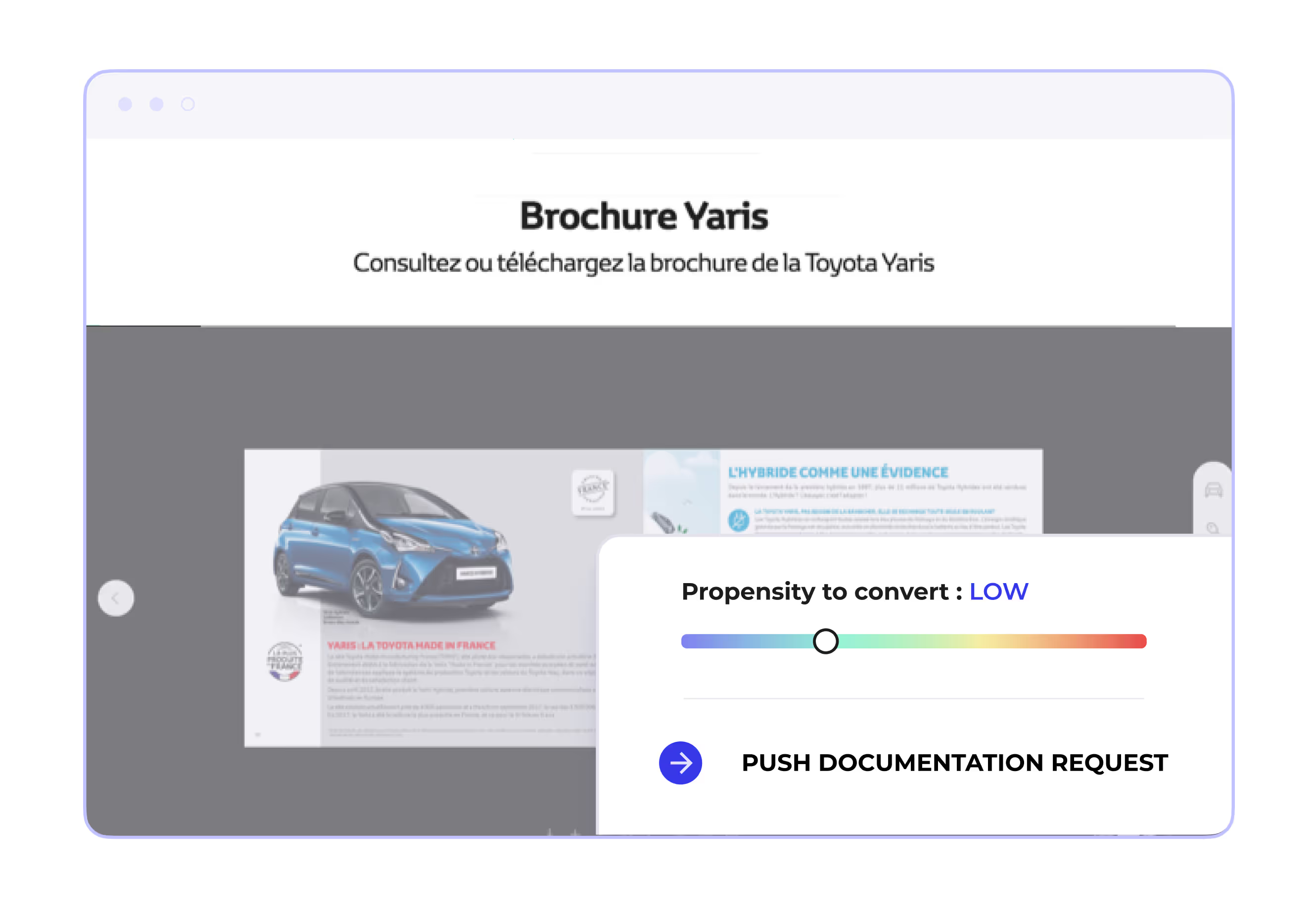
If the visitor’s likelihood to convert metric is moderate, they will be invited to customize their vehicle using the configurator.
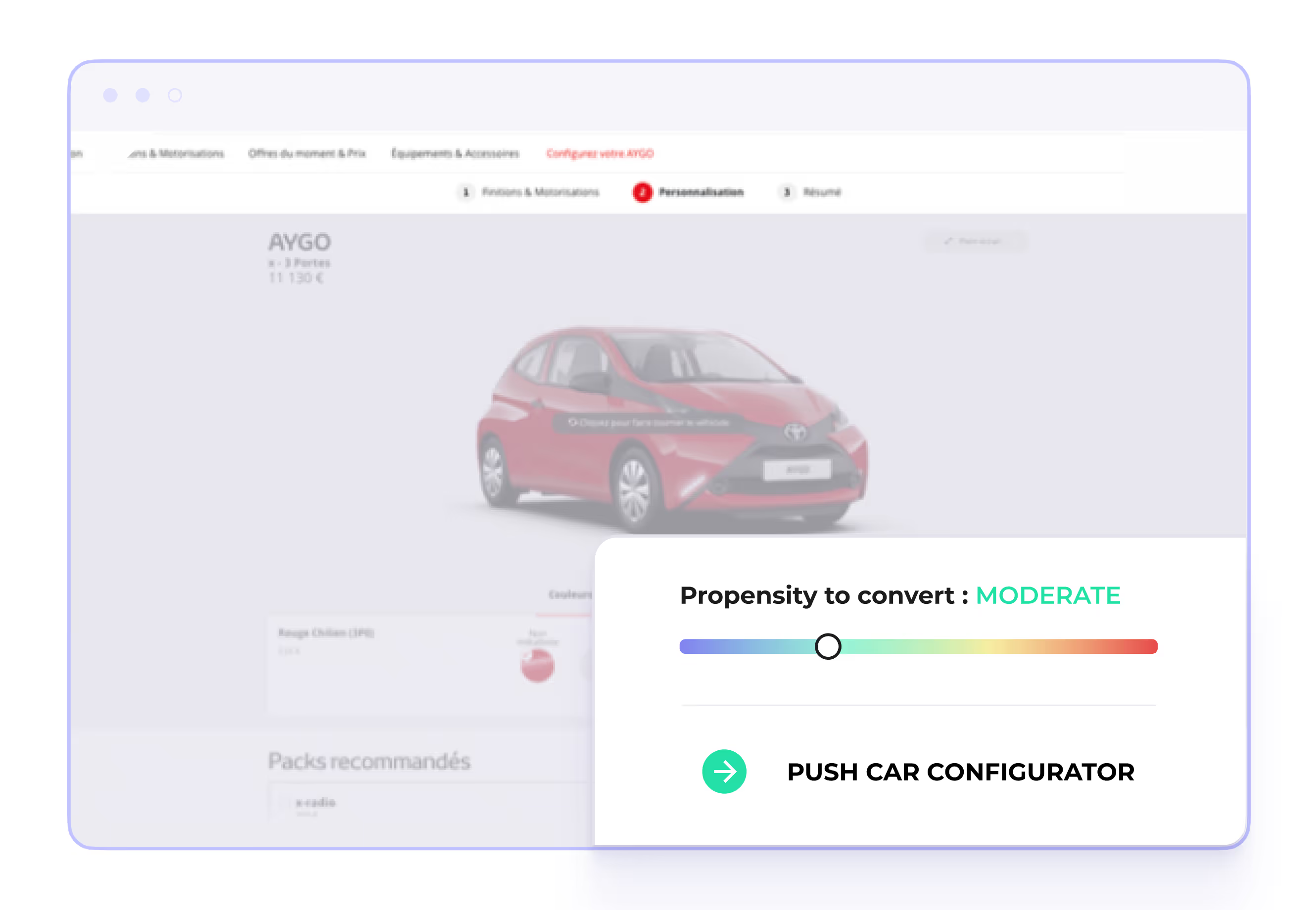
Finally, once the metric reaches the value of ‘high’, the visitor is considered to be sufficiently qualified to justify offering them a free, two-day test drive to encourage them to visit a dealership. It is essential for Toyota that this offer only be pushed out to leads showing both a strong appetite for the brand and a genuine intent to purchase. This type of incentive is costly and can only be justified if the probability of purchase is high.

Thanks to Kameleoon AI Predictive Targeting, Toyota has managed to double its sales and also reduce its promotional offer costs by half.
But how does it actually work?
Kameleoon AI Predictive Targeting relies on Machine Learning algorithms that measure each website visitor’s purchase intention throughout their journey on the site. The visitors can be customers or prospects, identified or anonymous. Kameleoon’s Artificial Intelligence engine processes and analyzes all of the visitors’ intention data (behavioral and contextual), potentially enriched by data from the brand’s data ecosystem (CRM, CDP, DMP, etc.) which are displayed in Kameleoon via its data connectors. The A.I. used in Kameleoon AI Predictive Targeting observes visitor behavior, draws correlations between visitors and measures each visitor’s conversion probability in real time.
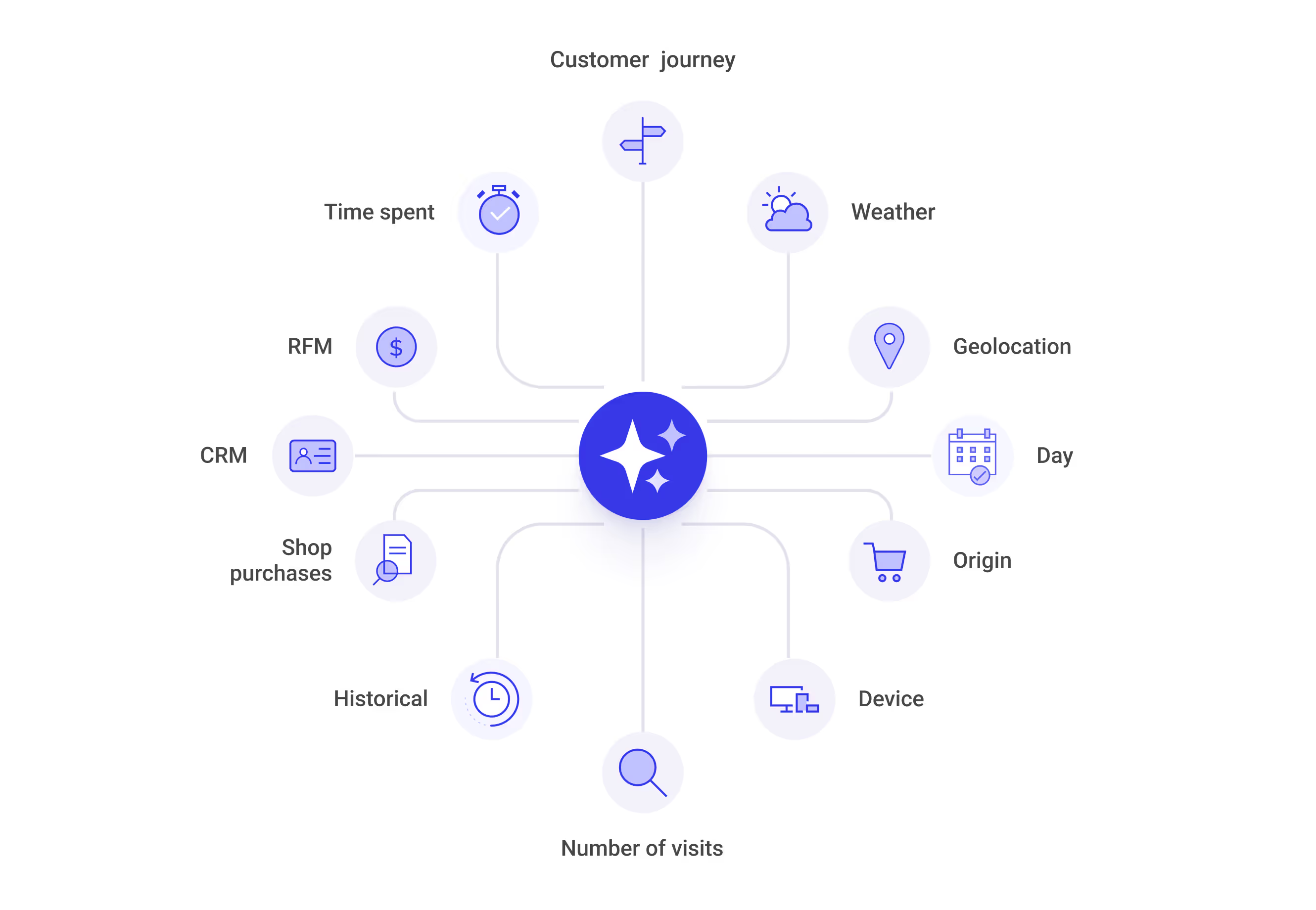
The Kameleoon platform captures visitors’ intention data, to which data from the brand’s ecosystem may be added (1st, 2nd and 3rd party data connectors). Kameleoon AI Predictive Targeting relies on a proprietary metric developed by Kameleoon to calculate a visitor’s probability to convert. Kameleoon AI Predictive Targeting enables marketers to see the breakdown of all their visitors according to their purchase intention; this is shown in the form of probability to convert metric.
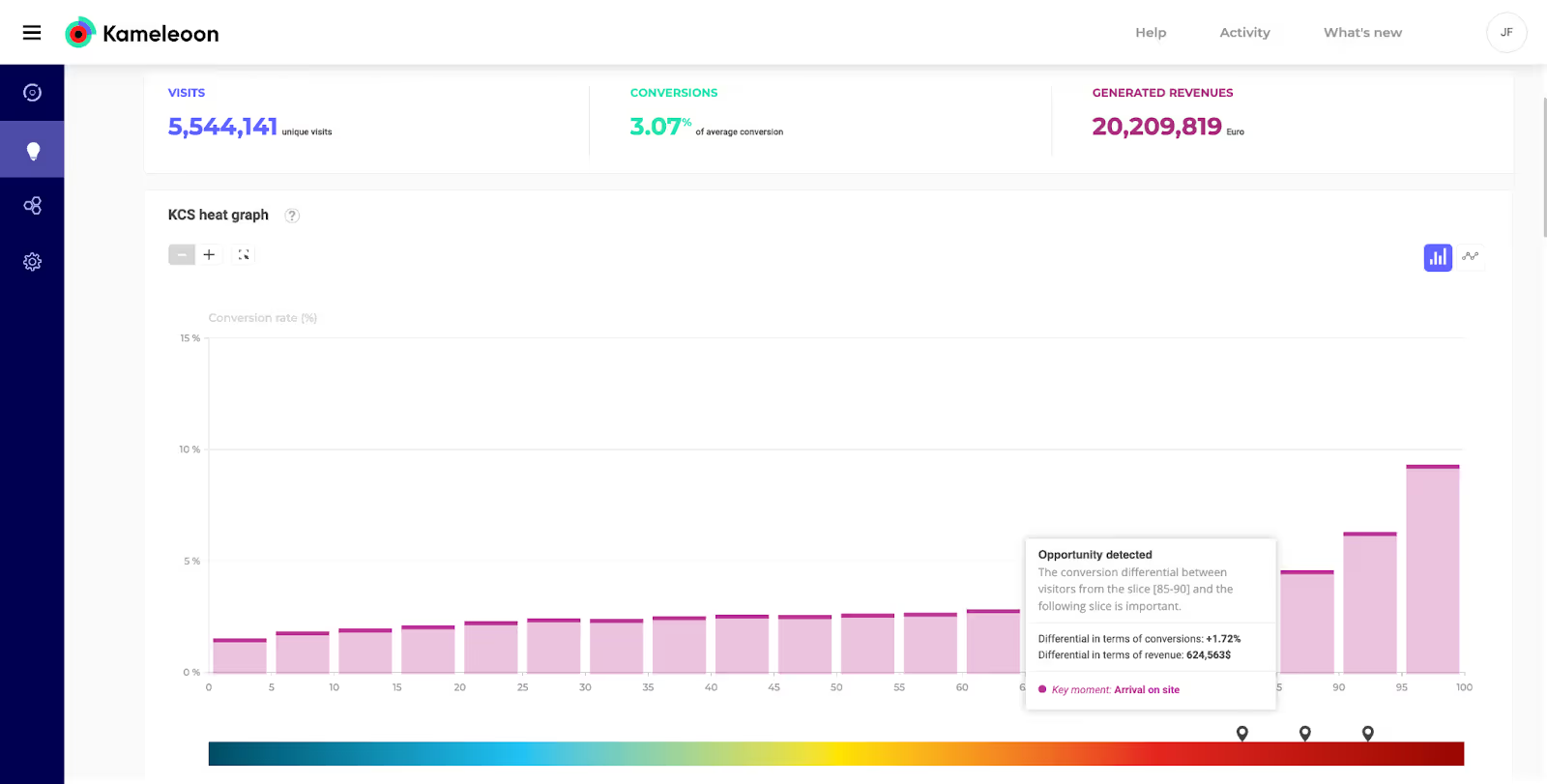
On the Kameleoon AI Predictive Targeting platform: breakdown of visitors according to their purchase intention.
For every given action on the website (purchase, filling in a form, etc.), the marketer sees the breakdown of their visitors according to their conversion probability. The visitors are split into groups, from “coldest” (i.e. showing zero or low purchase intention) to “hottest” (i.e. with a very high purchase intention).
Finally, Kameleoon AI Predictive Targeting detects the most valuable opportunities for launching a commercial or marketing action. It tells marketers which key ranges have the most significant potential gain in turnover and/or margin.
To find out more about Kameleoon AI Predictive Targeting, request a personalized demo!




